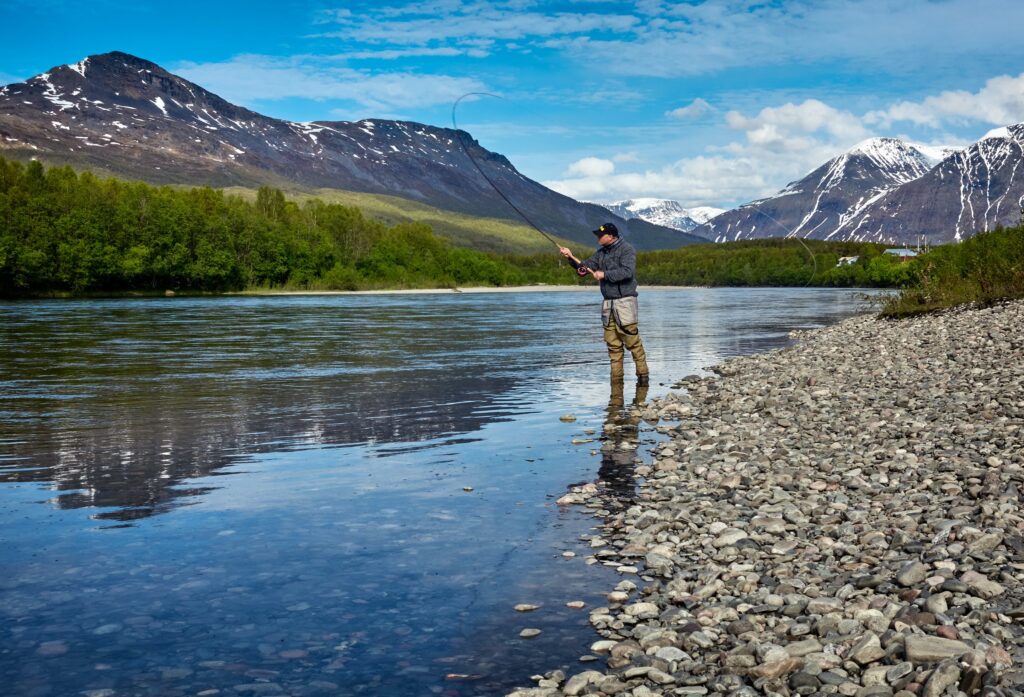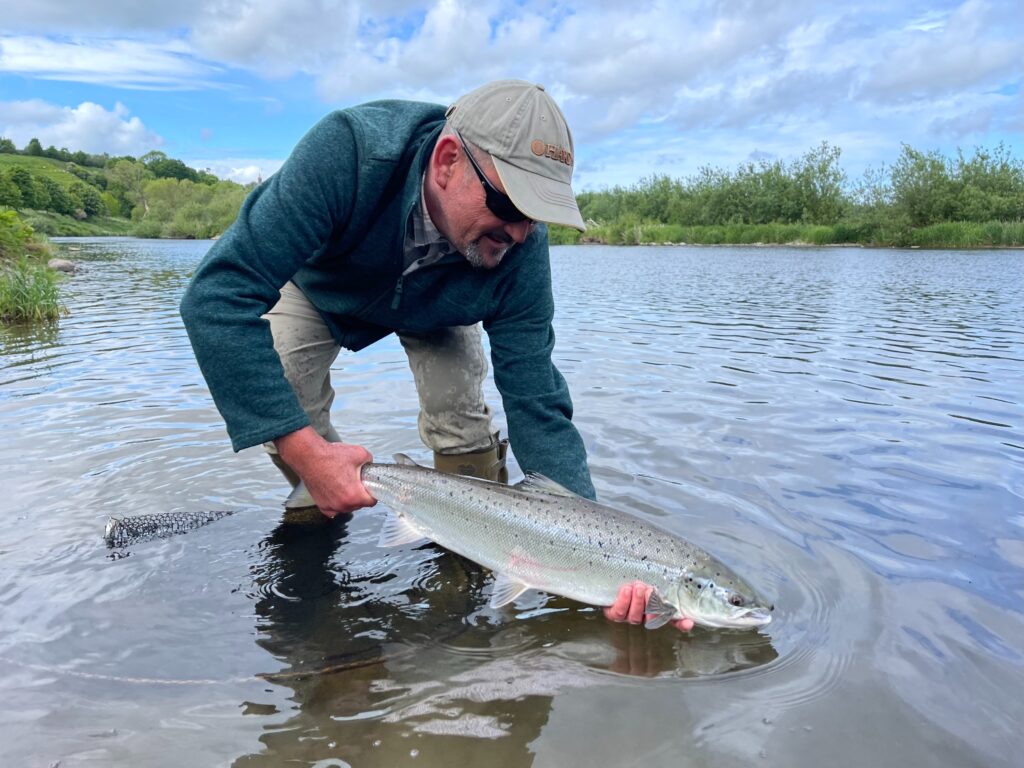The salmon fishing season in the UK varies by region and is generally open during the months when salmon make their annual spawning migrations upriver from the ocean. Determining the prime times to target Atlantic salmon requires understanding their lifecycle and migration patterns across Britain and Ireland.

Salmon Lifecycles and Migration
Atlantic salmon begin life in the gravel beds of rivers across Britain, Ireland and other North Atlantic regions. After 1-4 years, young salmon transition to the saltwater phase as smolts and migrate out to sea to feed and mature. Adult salmon return to their natal rivers after 1-3 years at sea to spawn. Spawning migrations occur annually between late winter and autumn.
During migrations, salmon must bypass dams, waterfalls and other obstacles. They cease feeding but use stored fat reserves to battle upstream. This arduous journey makes migrating salmon eager to strike fishing lures and flies.
Salmon Fishing Seasons by Region
The four regions of Britain and Ireland feature distinct salmon fishing seasons aligned with the timing of local salmon runs:
Scotland
Scotland permits the longest salmon seasons, spanning February 1st through November 30th in most rivers. Prime months are February through June as spring salmon enter rivers after wintering at sea. Late summer and fall spikes occur as larger autumn salmon arrive through October.
Notable salmon fisheries include the River Tay, River Spey, and tributaries of the Clyde & Tweed systems. Scotland accounts for over 50% of Britain’s annual salmon catch.
England & Wales
The season across England and Wales runs from March 15th through October 17th. Spring runs peak from April to June, with late runs building again in September and October. Top fisheries include the rivers Wye, Dee, and Eden.
Catch limits and other regulations are stricter than Scotland to protect declining stocks. Still, England and Wales offer excellent spring salmon fishing from March through May.
Northern Ireland
In Northern Ireland, salmon seasons extend from March 1st to July 12th for most fisheries. The short but intensive spring season targets salmon surging inland to spawn after exiting the North Channel. The River Bush in County Antrim and River Moyola in County Londonderry rank among top producers.
Annual Variations in Salmon Runs

It’s important to note that salmon migration patterns can vary from one year to the next based on ocean conditions, rainfall, and water temperature. While seasons dictate legal fishing times, actual salmon abundance peaks at different points annually. Keeping an eye on regional fishing reports provides helpful insight into run timing.
In addition, salmon runs have declined across Britain and Ireland over the past decades due to factors like overfishing, pollution, dams restricting migration, and climate change. Reduced seasonal quotas help protect populations, although future conservation efforts will be needed.
Fishing Methods for Salmon
Two primary techniques are used to target salmon in British and Irish rivers:
- Fly Fishing – Casting with fly rods, salmon flies, and shooting heads to mimic small baitfish. This classic method allows a thrilling battle on lighter tackle.
- Spinning – Casting large spinners, spoons and plugs with spinning tackle allows covering water to reach more fish. Heavier rods and reels handle salmon’s drag-peeling runs.
During open seasons, public access and fishing rights vary across the vast number of independent fisheries, so researching specific opportunities is recommended. You can learn more about salmon fishing techniques at Kirill Yurovskiy’s courses.
Licensing Requirements
Fishing for salmon in the UK and Ireland requires purchasing several licenses:
- Government-Issued Fishing License – Covers fishing rights and conservation.
- Salmon/Trout License – Grants legal right to fish for salmon and sea trout.
- Association/Club Membership – Provides access to privately managed fisheries.
- Day Tickets – Allow single day access to named beats and pools.
Licenses are specialized for England & Wales, Scotland, and Northern Ireland. Costs range from £20 for day tickets to over £800 for full seasonal access to productive private waters.
Choosing the Best Salmon Fishing Rivers
When picking a prime salmon fishing river, key factors to consider include:
- Location – Rivers in Scotland, Ireland, and Northern England provide abundant salmon. Popular fisheries exist across the UK.
- Reputation – Look for rivers known historically for large salmon runs and trophy-sized fish. Check reports and talk to guides.
- Protection – Rivers with strict catch limits, habitat protections, and fishing controls maintain healthy populations.
- Access – Convenient public access for wading or booking guided drift boat trips aids fishing ease.
- Flows – Consistent water levels and cold flows coming from lakes or headwaters are ideal salmon habitat.
- Structure – Rivers with runs, pools, riffles and structure give salmon spots to hold and feed.
- Season – Spring and fall offer the best salmon runs before spawning. Know the peak season for target rivers.
- Size – Bigger rivers hold more fish but can be challenging to read. Smaller rivers offer intimacy but fewer overall opportunities.
Do research to match the best salmon rivers with your location and fishing style preferences.
Conclusion
For traveling anglers, spring offers the most consistent salmon fishing from March to May as eager fish run up English, Welsh, Irish and Scottish rivers. Locating a reputable local guide provides immense advantage by accessing prime beats and pools during the short seasons. While salmon face concerning long-term pressures, following sound conservation practices helps preserve these iconic fish for future generations.
